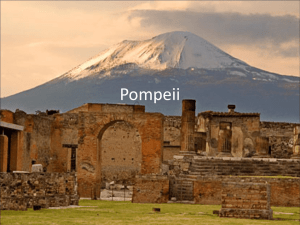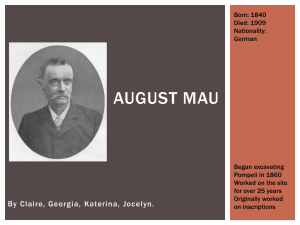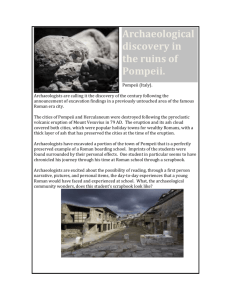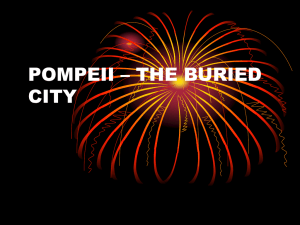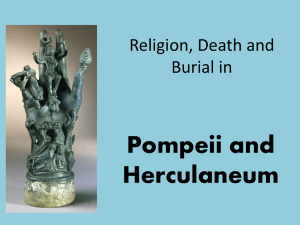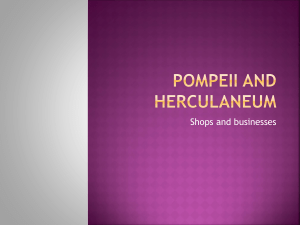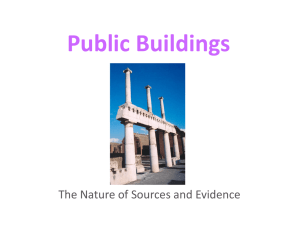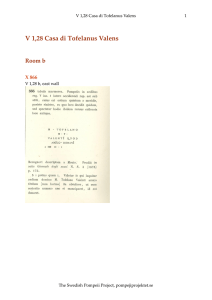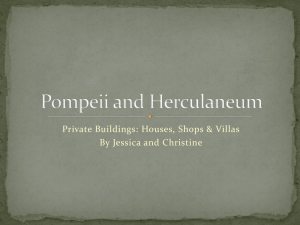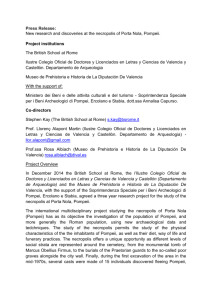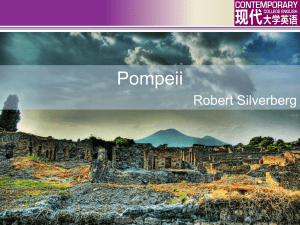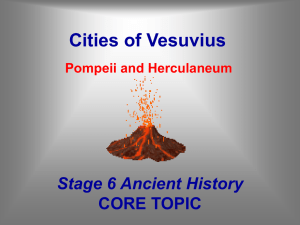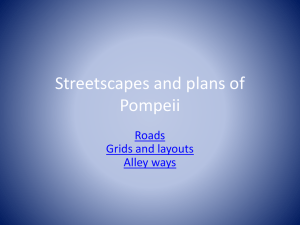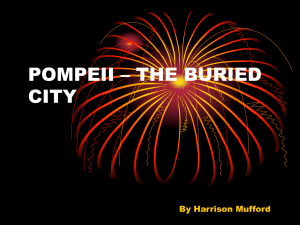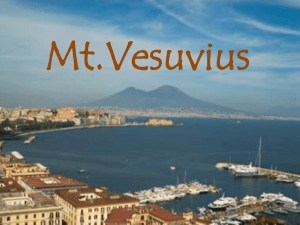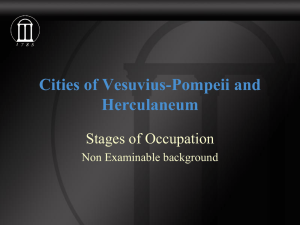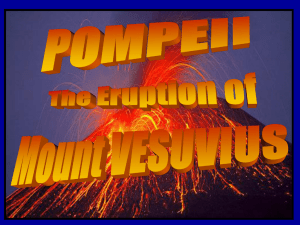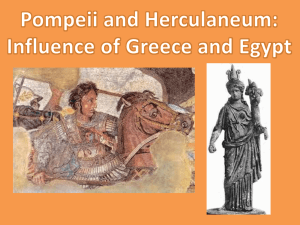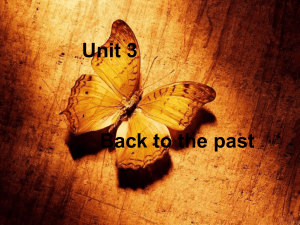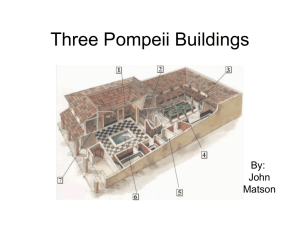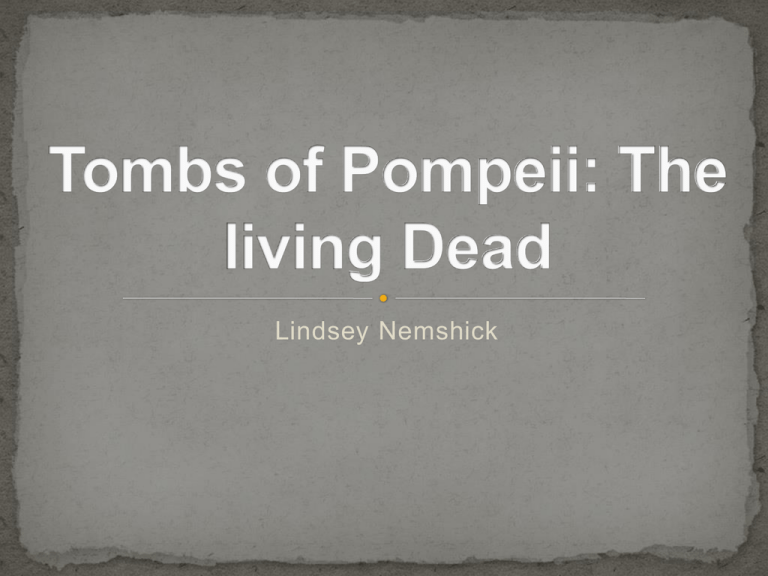
Lindsey Nemshick
Why Pompeii not
Herculaneum?
Pre-Roman Burials
Biographies
Marcus Porcius
Marcus Tullius
Arellia Tertulla
Areas of Debate
Conclusion
Samnite Cemetery
Dates: 2nd-4th Centuries BC
Scanty Evidence
Pottery, coins, and a bronze mirror
Primarily inhumation burials
Plain fossae enclosed with tiles
What can we possibly deduce from this type of burial
practice?
Recall:
Roman colonization dates?
Who defeated Pompeii?
Colonist Contributions
Theaters, baths, temples, town walls, and funerary
customs
* Direct connection between Roman arrival in Pompeii
and the shift from inhumation burials to cremation
Evidence:
The Epidii family
Are the placement of tombs, lining the streets, a sign
that tombs were important to the people of Pompeii?
Or is it possible that this location, on the outskirts of
town, trivialized tombs, rendering them insignificant?
Henrik Mouritsen
Cyclic changes in funerary practice
Decline in elite tombs and rise of tombs of
freedmen and freedwomen (same time)
Did the elite shift their burials back on private
property for exclusivity?
Potential Magnitude of Funerary Landscape
Graffiti as “community announcements”
Feasts
Birthday or anniversary of the death of the
deceased
Parentalia (Roman feast of All Souls)
Gardens
Meals shared
“Funerary monuments, created to immortalize the dead,
in their turn die; tombstones decay, inscriptions
weather and stone crumbles and falls. Preservation
often entails removal and reuse and once isolated from
the cemetery the role of the monument, to mark and
protect the last remains of human life, becomes
increasingly obscure. The tombstone is an aid to
memory but human memory is all too short and every
culture ultimately cannot avoid neglecting and
forgetting its mounting dead.”
-Valerie M. Hope
Berry, Joanne. The Complete Pompeii. New York: Thames & Hudson, 2007. Print.
Bradley, Pamela. Cities of Vesuvius: Pompeii and Herculaneum. Cambridge: Cambridge UP, 2005.
Print.
Castell, Dorothea. Funerary Inscriptions in Pompeii: A Study of the Epitaphs of Pompeiian Freed Slaves.
Thesis. Lund University, 2012. N.p.: Lund University Publications, n.d. Print.
Cooley, Alison, and M. G. L. Cooley. Pompeii: A Sourcebook. London: Routledge, 2004. Print.
Cormack, Sarah. "The Tombs at Pompeii." Ed. Pedar W. Foss. The World of Pompeii. Ed. John J.
Dobbins. London; New York: Routledge, 2007. 586-606. Print.
Emmerson, Allison. "Evidence for Junian Latins in the Tombs of Pompeii?" Journal of Roman
Archaeology 24 (2011): 161-190. Print.
Emmerson, Allison. "Reconstructing the Funerary Landscape at Pompeii's Porta Stabia." Rivista Di
Studi Pompeiani 21 (2010): 77-86. Print.
George, Clarke. Pompeii. Vol. 2. London: C. Knight, 1832. Print.
Hope, Valerie M. "Constructing Roman Identity: Funerary Monuments and Social Structure in the
Roman World." Mortality 2.2 (1997): 103-21. Print.
Jashemski, Wilhelmina F. "Tomb Gardens at Pompeii." The Classical Journal 66.2 (1971): 97-115.
JSTOR. Web. 16 Feb. 2014.
Mau, August. Pompeii: Its Life and Art. Trans. Francis W. Kelsey. New Rochelle, NY: Caratzas Brothers,
1902. Print.
Mouritsen, Henrik. "Freedmen and Decurions: Epitaphs and Social History in Imperial Italy." The
Journal of Roman Studies 95 (2005): 38-63. JSTOR. Web. 1 Mar. 2014.
Toynbee, J. M. C. Death and Burial in the Roman World. Ithaca, NY: Cornell UP, 1971. Print.

